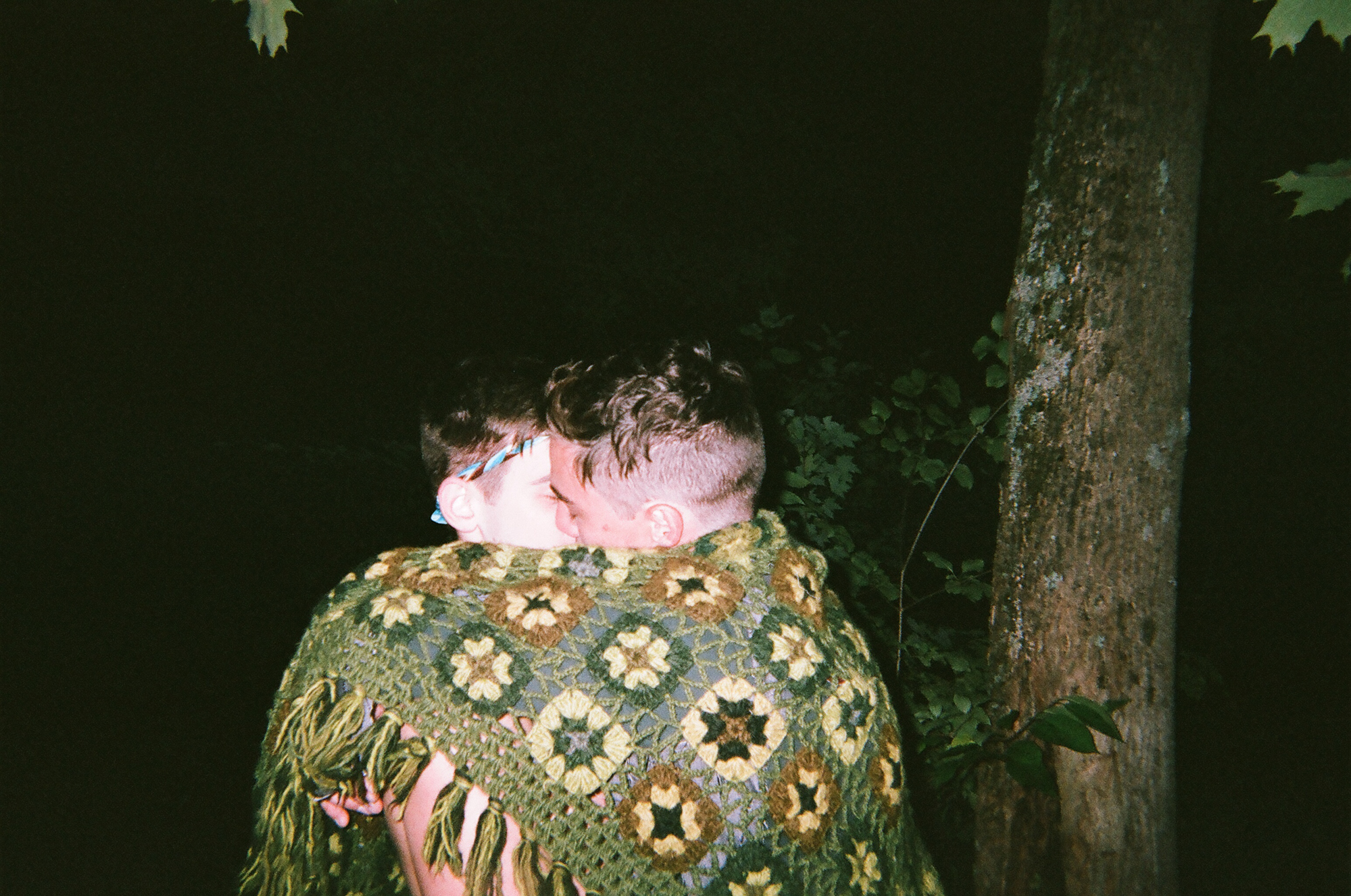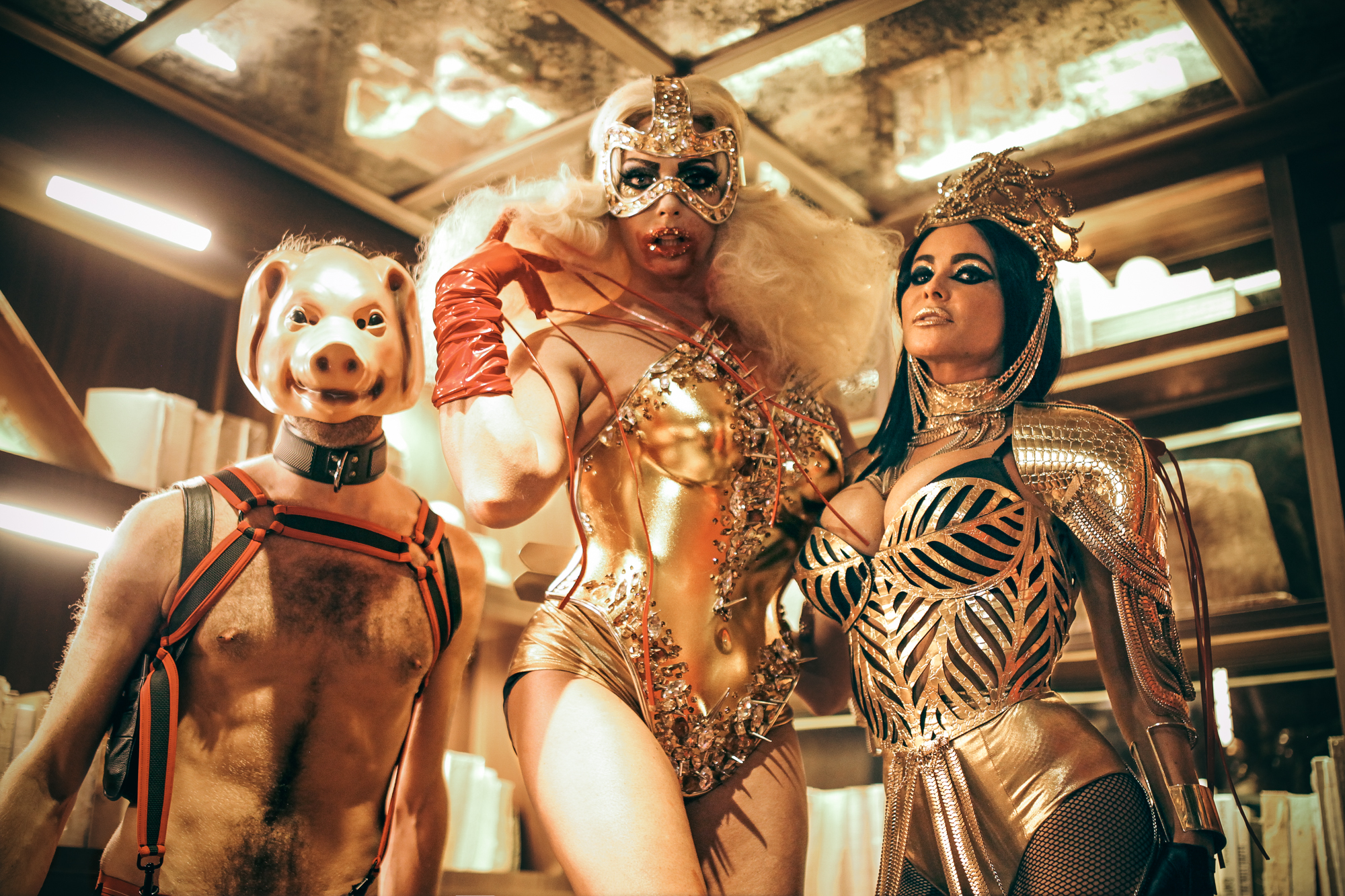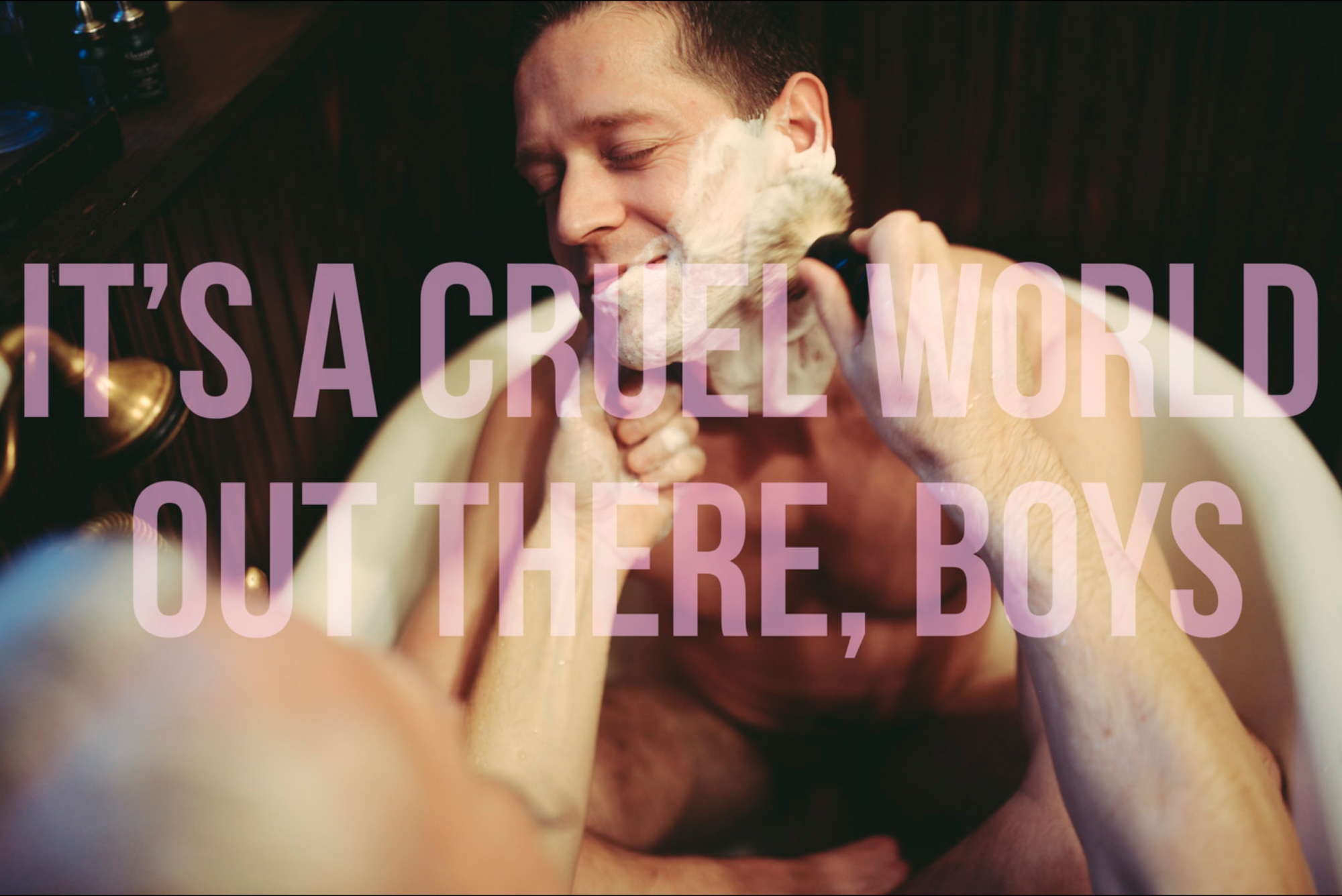An Internal Experience | A Conversation with Sam Waxman
Ben Ashby
Sam Waxman is a man I've never met, but if the kind words his friends have said about him mean anything...this man is one of a kind. I have long been obsessed with his photography. I love anyone's work that can evoke and caption an emotion at the same time. There is a rawness to the men in the photos and to the man behind the camera that goes miles above others in capture a moment of the human condition. In my quest to learn more about Mr. Waxman and his art I asked Christophe to sit down with Sam....
When did you first become interested in photography?
When I was a kid, my grandma used to buy me disposable cameras when we went to the grocery store together. My grandparents live in a really rural part of Vermont, and would let me go out on my own for hours to walk around in the fields and woods to take photos. Sometimes, when I really liked one of my photos, my grandma would get an 8x10 print for me. It was difficult for people to engage me socially as a kid, so I think they were satisfied to leave me on my own with a hobby they could tell made me happy.
Were you self-taught or did you learn in school/from a mentor?
Definitely a mix of both. I took film photography classes in high school, but I had explored it for years before that as a hobby. Later, I studied photography and sculpture at the School Of The Museum Of Fine Arts in Boston, where I learned a lot of the technical skills that are invaluable to me now like digital editing, printing, and studio lighting. One of my biggest mentors both artistically and personally from the time I was a toddler is my best friend Liza. She is a level twelve weirdo, and one of the most interesting, complicated, and and brilliant artists I have had the pleasure of knowing. She inspired me from a very young age to express myself creatively and showed me that it is okay to be introverted and to go against what people expect of you.
What themes do you explore through your work?
Some of the big overarching themes I try to explore in my work are the politics of identity, queerness, sexuality/fetishism, semiotics, and the mysteries of the natural world. I’m constantly discovering new things about myself and reinterpreting my world, (often in unexpected ways) through my work. My influences vary greatly depending on where I am in my life. When I was an intensely shy kid, photography allowed me to look inward, and provided me a way to share myself with people in a way that I couldn’t in normal social terms. I grew up in Maine and spent a lot of time in the woods. I think is where I started to develop the kind of appreciation and respect for the primal beauty surrounding life, death, and the natural, spiritual order of things that I have now. Later, my work became a powerful tool with which to explore the incredibly complex feelings I was dealing with surrounding my sexuality and identity as a queer man, and gave me a platform to put myself out into the world. It’s always been a process of dealing with myself and finding ways to interact with the world that work for me. The more work I produce, the more cohesive it all becomes. I think I come upon my influences and the ideas I want to explore pretty organically.
How do you find and choose you subjects or locations?
I’ve always loved exploring and traveling on my own. Scouting locations solo is one of my favorite things to do. When you’re looking for an ideal place to shoot, you’re hyper-aware of your surroundings, taking in color, light, texture, wondering about the history and significance of the places you’re passing. I find my subjects in a bunch of different ways. Some are folks I’ve met through apps like Scruff and Grindr, some are people I’ve approached in public or on the subway, some are friends, some are lovers. Ever since I started to build a following on Instagram, I’ve been lucky enough to have people approach me wanting to collaborate which I am so thankful for. I don’t have specific criteria. If I find a person unique and interesting in some way, I want to photograph them. It’s amazing how intimately you can get to know someone in the setting of a one-on-one shoot. It’s something I really cherish.
How do you compose an image?
Do you go into the shoot with a specific shot in mind, or does the inspiration strike when you place your model in the setting? Definitely a bit of both. Often I get inspired to create something that’s very specific, and I’ll plan out my shots and styling pretty meticulously. This also informs who I choose as my subjects. Other times, I keep it much more loose. I love getting to know people and shooting them in their own spaces. With those kinds of shoots, it’s much more about creating an authentic connection with a person than creating something that has a specific feeling and style to it.
What has been your biggest lesson learned through creating your art?
One of the things I have really come to appreciate about the artistic process is that it forces me to be the most authentic and radical version of myself that I can be. I want to make work that is not contrived, that is real, raw, and unique. I think striving for that takes a lot of intense introspection and awareness of where my priorities are at. It takes recognition of my shortcomings and the ability to hold myself accountable for them. That’s not to say that I always succeed in those endeavors, but I try my best. Why did you choose your craft (photography) My photography work has always been heavily portrait-based. Growing up, I wanted so badly to be able to connect with people, but was severely lacking in social aptitude. Photography allowed me to explore and experience people on my own terms, in a way that I could understand. It was also something that allowed me to spend a lot of time alone without being questioned. It made things less confusing and more digestible for me.
How hard was it to become profitable at it?
Well, speaking purely from a financial standpoint, I started making money as a photographer at age sixteen when I started shooting weddings. I learned some great lessons from doing that kind of work, but I never found it particularly challenging or interesting. For a long time there was a big divide between the photography I did for work, and my personal projects. It wasn’t until college that I was able to start merging those two worlds, finding paid work that was more in line with my artistic vision. It’s taken a lot of failure, shameless self-promotion, and luck to get to where I am now, and I still feel like I’m just now dipping my toes in. I feel very lucky to be able to make a living pursuing my passions.
Any suggestions to newcomers to the field?
Never stop shooting. Not everything you do has to have solidified purpose behind it. Some projects will take shape after you begin, and many won’t. Try on different styles. Make some shit work that never sees the light of day. Your eye is a tool and it needs constant practice and maintenance. Be tenacious. Promote yourself. Connect with other creatives. Build your community. Use every tool in your arsenal to reach people and institutions. Being an artist in any medium is such an internal experience, and even though we may not often ask for support, we do need it. Showing your work in a public space ranging anywhere from an art gallery to Instagram holds you accountable, builds your community, and challenges you to innovate and be better.
If you couldn’t be doing your craft, what would you do instead?
Although my photography work has taken priority of most of my time lately, I also have a real passion for sculpture and metal-working. Sculpture was just as big a focus for me while I was in school. Most of my metal-working skills were self-taught, and after college I worked professionally as a welder/metal fabricator for a while so that I could hone my craft. Photography and sculpture fulfill me in some essentially different ways, and I think I would be just as happy to focus on either. I take myself very seriously as a craftsman. My sculptural work involves a lot of technical processes dealing with metal, wood, plaster, and other various materials, so I often find inspiration in things that might seem mundane or commonplace, but that demonstrate a mastery of craft.
Any favorite moments of your career so far?
There’s nothing quite like selling your first piece. My sophomore year of college, I submitted a framed print titled, “Sunday Best” from my “Symbiosis” mixed-media series to the winter art sale at SMFA. On the first night of the sale, I was walking around looking at work, waiting for them to rotate the collection and hang up my piece, but after a few hours I still hadn’t seen any sign of it. When I finally asked one of the coordinators about it, she told me that my print had sold in the pre-sale before the show had opened to the public. I was elated. It is still one of my favorite pieces, and it was the first series I felt good enough about to put out into the world. I felt excited and vulnerable about it, and having that little bit of validation really went a long way in encouraging me to exhibit my work.
What would you do differently if you could start from scratch?
Don’t hesitate. I didn’t really start producing work that I felt had something unique and personal to it until I was almost done with college. For one, I didn’t come out as gay until I was 20, so I was actively avoiding subject-matter and topics that were incredibly central to my mental and emotional states. I was also constantly blocking myself from making any work that I didn’t have a solidified concept and plan for. Besides preventing myself from making work that could have been worthwhile, this also set me back a few years in developing my style by just trying things out and making mistakes.
Is there anything you really enjoy in your craft vs another line of work?
My photographic process is very different in a few essential ways from my sculptural process. My sculptural work is intensely solitary and internal. It allows me to access the part of me that loves logical problem-solving in a very different way than does photography. Most of my sculptural work is steel-based, and working with such an unforgiving material with a limited set of tools forces you to constantly come up with workarounds and creative solutions to get the results you want. Photography allows me to be a bit more loose, and gives me endless opportunities to collaborate and connect with other people. Balancing these two different artistic processes is a very real and direct reflection of how I try to keep myself balanced on a personal level.
Is flannel really always appropriate?
Oh yeah, bub. I grew up in a small town in Maine right near LL. Bean. It’s important to know the difference between your street, work, and formal flannel.





















